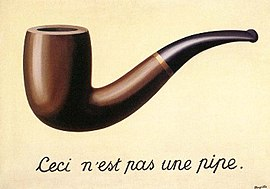Visual Culture surrounds us in modern society. There are many different aspects to visual culture, and this short text will summarize a few of the fundamentals of understanding visual culture; these being representation, and the different types of pictorial representation that exist – iconic, symbolic and indexical.
Any image or text is a representation. What this means is that no matter how closely or accurately the representation resembles the physical object or entity it is attempting to depict, it is no substitute for the ‘real’ object. It can never have the same impact or power as the ‘real’ object, as it is removed from the ‘real’ world, and detail, no matter how minor, is lost.
This is briefly discussed by Plochmann (1976), in regards to Platonic visual theory. He states that no matter how realistic a representation of a woman in statue form, i.e. a sculpture, it can never be compared to the real thing, and that other issues are raised by changing flesh and blood to a representational medium, in this case, stone.
There are may others who meditate on this, from Walter Benjamin, to Roland Barthes, and even Jean Baudrillard; who all, in some way, bemoan the disconnection a representation has from what it is representing.

The Treachery of Images, René Magritte. The text reads "This is not a pipe"
Representations are able to be ‘motivated’, or ‘unmotivated’. A motivated representation is one which endeavours to resemble the object which it is representing. For example, a photograph of a cat resembles the animal; therefore it can be considered motivated representation. However, if we write the word ‘cat’ on a piece of paper, this does not look like the animal it represents, and as a result, is unmotivated representation.
There are three different types of pictorial representation. These are iconic, symbolic and indexical. An iconic image can be referred to in many ways. In terms of religious context, an icon is a pictorial representation that is worshipped, or imbued with a sense of power or awe. However, an icon in the contemporary world could be as simple as an icon on a computer monitor, representing a file or application.
A symbolic image may not necessarily look like what it represents; it may be stylized – but a symbolic image is universally and instantly recognizable. Examples of this include the Christian crucifix as a depiction of Christ, or Christianity in general, or the Star of David as a symbol of Jewish faith.
An indexical image can be seen as the most flexible of the three. This type of image is used in a variety of applications, such as advertising, or perhaps to demonstrate something for example, a direction or instruction in a technical manual. Indexical images are also able to supplement text, such as a reference in a textbook, or a diagram.
The process and methods of representation that have been used by society throughout time are far too numerous for the scope of this short text.
Processes of representation have changed over time, eventually moving away from mainly textual, “unmotivated” representation, such as scripture, which held great power in classical times. Eventually, pictorial or “motivated” representation was accepted as an alternative; as it could be understood by the masses. The development of pictorial representation then lead to images being categorized due to their purpose and context.
Hi! Thank you for posting this fantastic info, as it's very useful for everyone looking for this, and these words sounds really awesome! But what about studying, almost every learner is finding struggles in doing his essays. Then, they hire professional typers from online https://www.nursingpaper.com/examples/rheumatoid-arthritis/ writing agency to do their difficult tasks. It is really great to get their help to complete home assignments with high results.
Posted using Neoxian City